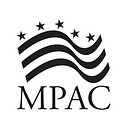Lessons from Christchurch
Recently, New Zealand’s Royal Commission of National Inquiry found that NZ security agencies disproportionately focused on “radical Islamist terrorism” instead of white supremacist threats.
Though the report did not find that these shortcomings would have prevented the Christchurch massacre, where a white supremacist terrorist murdered 51 Muslim worshippers, the commission did note that an “inappropriate concentration of resources” was dedicated to Islamist extremism. According to submissions to the commission from a number of Muslims, “they felt they were targeted by security agencies while threats against them were not taken seriously”. New Zealand is not alone in its discriminatory approach to acts of terrorism or its failure to recognize a rising global network of white supremacism; the United States, too, needs to own up to its inadequacies and discrepancies in tackling white supremacist terrorism.
In our 2019 white paper, The White Supremacist Threat to America, we identified this same issue in the American context and recommended “that greater research into the white supremacist terror threat from industry experts, academics, and community leaders would allow the federal government to better situate white supremacist violence in the broader nexus of federal government terrorism definitions”. Despite all evidence pointing to the severity of the threat of white supremacist violence, the American government has yet to recognize these acts as terrorism and take adequate legislative and bureaucratic steps to hinder them. For example, FBI director Christopher Wray has said that the FBI has raised its threat assessment of racially-motivated violent extremists to a “national threat priority”, but, as we noted in our white paper, some forms of white nationalist violence should in fact be classified as international terrorism.
As per a Brennan Center report, the Justice Department prioritizes and channels more resources toward “‘international terrorism’ investigations, which in practice primarily target Muslims, over ‘domestic terrorism’ investigations, which do not”. In reality, white supremacism bleeds across borders. The Christchurch shooter was not a New Zealander, but an Australian motivated by white extremist attacks in Norway, America, and the United Kingdom. Soon after he carried out the massacre, a shooter carried out an attack in El Paso, Texas, claiming to have been inspired by the events of Christchurch. Categorizing these types of violent extremism as domestic terrorism is not only fallacious, but also dangerous: by not allotting due attention and resources to inhibiting white supremacist violence, our federal government leaves the nation, especially minorities, inherently vulnerable to future mass attacks. On that, we can certainly learn from New Zealand.
What transpired in Christchurch and how New Zealand has responded to the tragedy carries many lessons for us. In the immediate aftermath of the attack, NZ Prime Minister Jacinda Ardern condemned the attacker as a terrorist, and within the week, her government issued a ban on military-style weapons. After the release of the Royal Commission of National Inquiry’s report, PM Ardern apologized for the failure of the security agencies to flag white supremacist activities. New Zealand has been explicit about their missteps. We have yet to do the same in America. The FBI still “divides its counter-terrorism pie up 80 to 20: 80% goes on fighting international terrorism, 20% domestic. This disproportionate distribution inevitably impacts the American Muslim community, be it through surveillance policies, media bias, or public opinion. An international terrorism designation for certain forms of white supremacist extremism ultimately provides a better safeguard for all of America.
